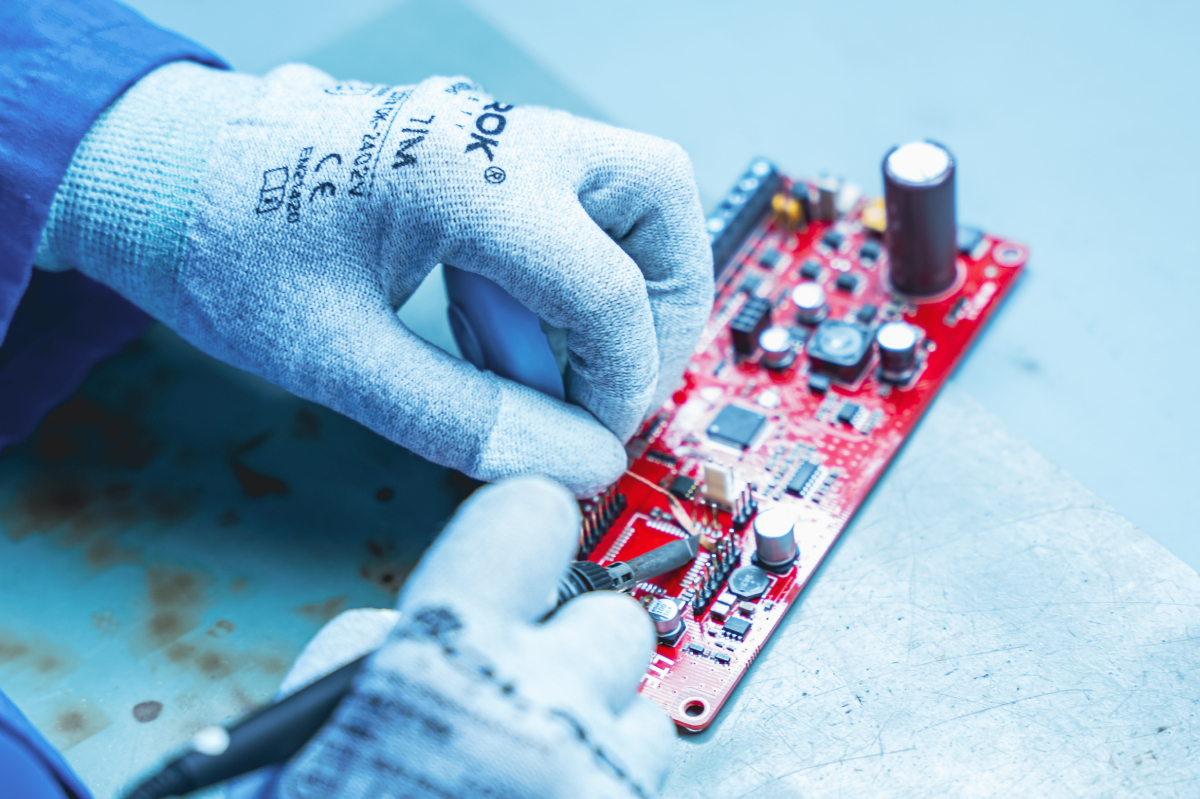



Printed circuit boards (PCBs) form the foundation of modern electronics. The first PCBs were developed during the Second World War for use in radio construction. PCBs became widely used in the 1950s, with phenolic resin and paper laminates used as base materials. A further significant milestone in the evolution of PCB technology was reached in the 1970s and 1980s with the introduction of FR-4 material and the development of the first computer programs for PCB design.
Every electronic board consists of a dielectric substrate with layers of copper that form electrical paths. The choice of material for tile production affects the electrical, thermal and mechanical properties of printed circuit boards (PCBs). The following section discusses the most commonly used types of laminate and their properties.
This material is most commonly used in the electronics industry for producing printed circuit boards. It is made of an epoxy laminate reinforced with fibreglass. The laminate has excellent electrical and mechanical properties and meets the UL94-V0 flammability standard, making it fire-resistant.
Printed circuit boards on an aluminium substrate are used for electronic components that generate significant heat, such as LEDs. The thermal conductivity of aluminium-based laminates ranges from 1 to 3 W/mK. Another important feature of aluminium-based PCBs is their dielectric strength, which ranges from 2 to 10 kV. A limitation of these laminates is that metallised through holes cannot be created. This is why they can only be used to assemble SMD components.
The demand for ever smaller electronic devices has led to the development of flexible PCBs (flex) and hybrid combinations of flexible and standard PCBs (rigid-flex). This allows designers to adapt PCBs to fit different enclosures. Before designing Flex and Rigid-Flex PCBs, it is advisable to consult the supplier about the available stack-up. This will allow for a more effective design process and ultimately ensure the correct production of the laminate.
Flexible circuits consist of a flexible substrate with printed copper tracks. Flexible PCBs are produced using polyamide as the base material. This material is mechanically robust and thermally stable. Flexible printed circuits can be single-sided, double-sided or multi-layered. The addition of stiffeners to flexible areas improves the rigidity of PCBs in areas under connectors or electronic components. ZIF connectors are most commonly used to connect flex PCBs to other components in a module.
Rigid-flex circuits combine the properties of rigid and flexible printed circuit boards (PCBs). The flexible areas allow the PCB to fit snugly inside the device housing, while the rigid part allows standard electronic components to be used. Using this type of PCB reduces the number of connectors required for the application, thereby increasing reliability and eliminating electromagnetic interference.
The material used to make a PCB depends on its intended application. Understanding the differences and parameters of the data allows designers to select the most suitable and cost-effective material.